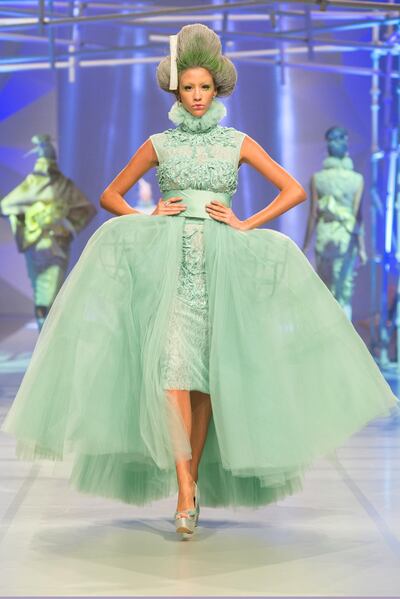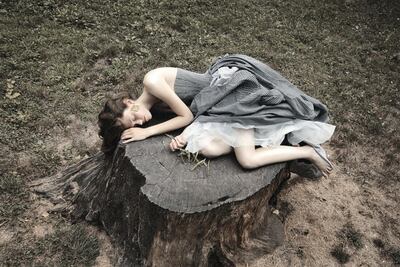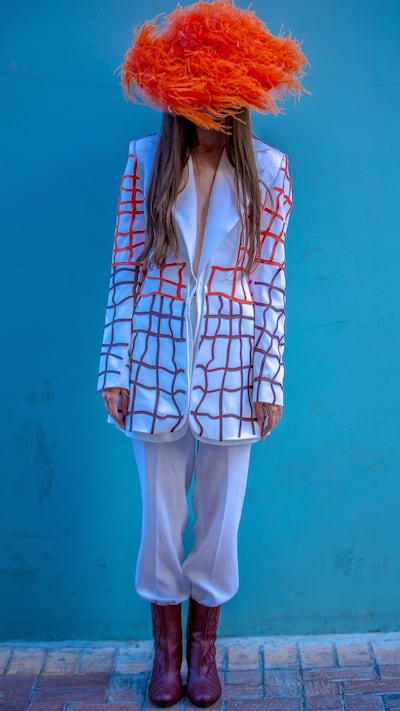Wednesday marks the long-awaited return of Fashion Forward Dubai (FFWD), the four-day sartorial spectacle featuring home-grown fashion, jewellery and accessories brands, and international collaborations.
Founded in 2013 as a GCC-wide platform for emerging designers, FFWD was originally an industry-only event, but now all shows and events are open to the general public. Last year, the team also realised the shifting landscape of retail demanded a more fluid and sustainable approach, so they went back to the drawing board to restructure from the ground up. Now, after a self-imposed hiatus, FFWD is back and will run from Wednesday, October 30 to Saturday, November 2.
Part of that rethink is that anyone with even a passing interest in fashion can pop along – free of cost – and catch the latest collections hitting the runway. Another new idea is the introduction of Shop The Show, an app that allows the audience to buy direct from the runway, even before a show ends. Powered by Zbooni, the app promises to be easy to use, fast and secure. In addition, The Garden pop-up will offer handbags and jewellery from India-inspired Shvet, Omni's and Margherita, among others.
Talks and panel discussions are another popular FFWD feature. This year, the founders have roped in Laudomia Pucci of Emilio Pucci, beauty entrepreneur Joelle Mardinian and sustainability advocate Shahd Al Shehail, who will explore topics such as how to pitch a brand to buyers and how to make fashion truly sustainable.
Finally, as always, visitors can expect a broad mix of labels on show – 21 this year – from well-established UAE designers Michael Cinco and Amato, veteran supporters such as Arwa Al Banawi, Hessa Falasi, Roni Helou and Mrs Keepa, and a dozen newbies, including Hass Idriss, Hazem Kais, Maison Farah Wali, Thym and Tanya Skaff.
"FFWD has proven itself to be a great platform for emerging designers, and now they are taking it a step further by adding a commercial aspect," says French-Egyptian designer Marian Yeya, founder of Mrs Keepa. The label will return to FFWD to deliver a soft couture collection entitled Les Silhouettes, which plays on Japanese elements and exaggerated outlines.
“Mrs Keepa has been around for 14 years, so I am not looking for awareness anymore; I am looking to grow my clientele, and FFWD has proved that they have a good window to all of the GCC and the Middle East. The new business-to-consumer concept has got our interest. As I have my workshop here, we are able to deliver Shop the Show orders as soon as I get them, so for me it’s more of a commercial test. Hopefully it is going to be a great success,” says Yeya.
We speak to three other designers about opportunities and expectations.
Furne One: Dubai is like the New York of the Middle East
No version of Fashion Forward Dubai would be complete without Furne One, better known as the designer behind the label Amato, who has had the coveted closing slot at FFWD since its inception. First founded in 2002, Amato has dressed the likes of Lady Gaga and Mariah Carey.
You have been with FFWD since the start. Why is it still important for you to continue?
It is like a tradition for me to do the finale show with them. It’s my 10th consecutive season already and I am honoured and blessed to be able to do this. I am glad to be able to continue to create the show. There have been a lot of changes since I started. Dubai is like a melting pot for nationalities, it’s like the New York of the Middle East, so there are a lot of influences from other areas. Before, it was really difficult to start a fashion label because the whole city was just starting, and it’s not overnight that you can have a fashion industry. Nobody helped us, we had to do it ourselves.
How did you amass such a large and loyal clientele?
My designs were different, my aesthetic was different. If it was the same as everyone else, why would the customers come to me? I had to have my own identity. To be a designer, you have to do hard work, have determination, goals and a vision. You have to have all of these things to succeed, because fashion is not just about designing; fashion is a business.
How would you describe your design aesthetic?
Amato launched its ready-to-wear collection two years ago, and between couture and ready -to-wear, it’s a very different design process. For ready-to-wear, I have to think about what the consumer wants, but for couture, I have to make something that is like creating art and fitting it to a woman’s personality.
Farah Wali: Sustainable can be luxurious
A newcomer to Fashion Forward Dubai, Maison Farah Wali draws on the designer’s Egyptian heritage to create street couture, where fashion is infused with handwork, art and sustainability.
Why did you decide to get involved with FFWD this season?
I thought this would be the perfect opportunity to debut a wearable art collection here, considering that Dubai is the region’s capital for art and fashion. My family is Egyptian, but I am sort of a mix. I was born in Abu Dhabi, so it is all very familiar. I was here for six years before I moved to Cairo, and then I moved to Italy.
What was the inspiration behind the collection?
My inspiration was metamorphosis and the process of transforming, which somehow reflects this period of my life. I try to take a topic that I am really interested in and feel a connection to, such as metamorphosis, and bring a lot of other inspiration to it such as tribes and patterning. Then I start sketching and illustrating, and for this, I wanted to merge the face of a human being with an animal, so the audience is going to see a lot of that in terms of prints and handwork.
Then it will translate into how the garments are transformable, and how you can change your look in the same outfit. Designers and fashion houses will have leftover fabric from the season before, so I try to use that.
So sustainability is important to you?
Definitely. I try as much as possible to use leftover fabrics, recycle my own yarn and, for [silk screen] printing, I try my best to use ink that has been recycled. People have a misunderstanding that you cannot do a “luxury” brand without using damaging chemicals and products, so I want to switch that around. My collection and my entire concept as a brand is to do luxurious, customised artistic pieces in a sustainable way.
Tanya Skaff: FFWD is great for a small business
Known for her bold use of graphic patterning and sleek tailoring, African designer Tanya Skaff is bringing her collection to Dubai for the first time.
Why did you choose to get involved with FFWD?
I was born and raised in Nigeria, and I was exposed to many kinds of people. My friends were Indian, Chinese, Russian and African, but not so many Arabs. I love making the circle bigger, so Fashion Forward Dubai is a first step to enter the Arab world.
Also, this season of Fashion Forward is about new ideas and e-commerce, so I thought: why not? This see now, buy now [format] means people can literally buy off the runway. With a click, customers are connected to our showroom, and we can deal with them directly, which for a small business is great.
Does the format give customers the freedom to change things from the runway?
I am trying to be inclusive, so my sizes are from small to extra-large. If a customer is a size XXL, then of course I would do something special for her. There is no way I will say no.
What inspires your designs?
I am a designer who gets inspired by everyday life, which I then exaggerate in the tradition of storytellers. Sometimes I’ll write keywords. The inspiration for this collection, for instance, comes from a person who was born in the 1960s, and is fascinated by motion and mechanical engineering. The collection is called The Real Life, and it’s at once about op art, women’s empowerment and technology.





